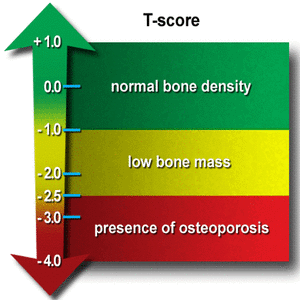What is the full form of BMDBMD: Bone Mineral DensityBMD stands for Bone Mineral Density. It refers to an X-ray test that measures the density of minerals in your bones, e.g., bone density. It shows how many grams of calcium and other minerals are packed per unit volume of your bone. This test indicates the strength and health of your bones. Usually, people who are at risk of osteopenia (mild bone loss) and osteoporosis (severe bone loss) undergo this test. Thus, the BMD test is performed to:

How is MDT Performed?Typically, the spine, hip, and forearm bones are examined during the examination. These bones are most prone to shattering when you have osteoporosis. It is a painless, non-invasive procedure that requires no medication. It involves low radiation exposure and you are required to lie on a bench or table during the test. There are two types of bone density scans:
Understanding BDT Results:BDT results are reported as T-scores. A T-score is a comparison of your bone density with the bone density of a 30-year old healthy person. So, it indicates how much your bone density is higher or lower than the bone density of a healthy 30-year old person.
Furthermore, a BMD test is recommended by a doctor as preventive screening for bone density under the following conditions:
How to Get Ready for the Test
The Experience of the TestThe scan doesn't hurt at all. Throughout the test, you must maintain stillness. ConcernsThe measurement of bone mineral density involves a modest quantity of radiation. The majority of experts agree that the danger is extremely low when weighed against the advantages of detecting osteoporosis before breaking a bone. How Frequently Should I Get Tested?Expect to undergo a bone density test every one to two years if you are on medication for osteoporosis. Your doctor might recommend getting a bone density test every two years, even if you don't have osteoporosis, especially for women who are going through or have recently come out of menopause. Other namesOther names for the BMD test include bone density test, bone densitometry, DEXA scan, DXA, p-DEXA, osteoporosis-BMD, and dual x-ray absorptiometry.
Next TopicFull Form
|
 For Videos Join Our Youtube Channel: Join Now
For Videos Join Our Youtube Channel: Join Now
Feedback
- Send your Feedback to [email protected]
Help Others, Please Share










